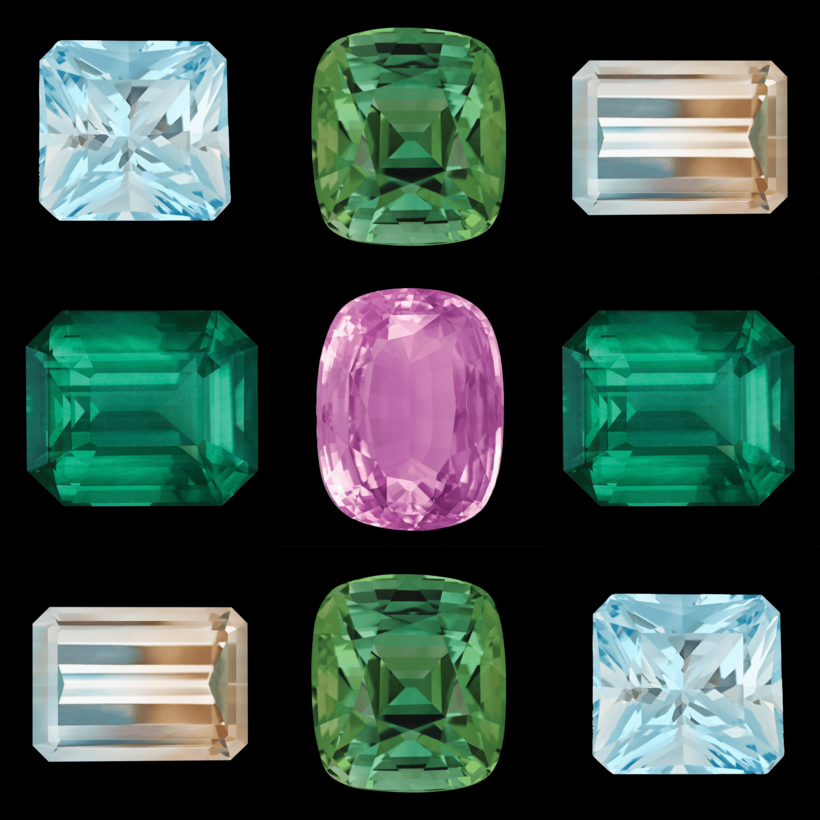The Academy Awards are jewel porn. Sometimes the frocks are unadventurous, and hot actors come and go over the years, but we can always dream and drool over the jewelry. This year, Hollywood beware. Only a short drive from the Dolby Theatre, 20 iconic gemstones are now on display in “100 Carats: Icons of the Gem World.” Whatever dazzlers Oscar night has to offer, they’ll be small-fry and dinky in comparison.
Held within the vault at the Natural History Museum of Los Angeles County, the exhibition features extraordinary precious stones that have never been shown before, with the exception of one: the Jonker 1, the most beautifully cut flawless diamond in the world, which has been hidden from public view for the last half century. Dr. Aaron Celestian, curator of the Gem and Mineral Hall, and Robert Procop of Exceptional Jewels, have organized the show-stopping stones so that they draw attention to what nature can produce in size and color—from a bubble-gum Barbie-pink sapphire to the largest deep-green emerald ever discovered in Columbia, none of which are enhanced or heat treated. For Gen-Z, currently obsessed with lab-grown stones, it’s an eye-popping chance to see rare natural wonders.
In addition, the exhibition gives Celestian a reason to discuss scientific research that involves the use of gemstones and minerals. In a way, the glitz and glamour of Hollywood gives precious stones a bad rap by confirming their frivolity, elitism, and the notion that when it comes to real life, who needs them? It turns out we all do. Simply put: gemstones can help cure disease and save the planet to boot.
Whatever dazzlers Oscar night has to offer, they’ll be small-fry and dinky in comparison.
Take the condition of hypokalemia—high potassium levels in the bloodstream that can induce a heart attack. Celestian is working with zeolites, minerals that travel through the body and absorb potassium without disrupting anything else. Taken in powder form during an attack, these minerals would be lifesaving. On another front, Celestian says, “We’re targeting delivering drugs direct to a cancer instead of delivering a drug through an entire body.” Other molecules may bind indiscriminately with cells in the body, but not our trusty gems and minerals which have one task and don’t interrupt other processes. A mineral cure for kidney stones is also on the horizon. Crystals aren’t just a pretty face.
Celestian can’t talk about the project to cure blood diseases, which he’s working on with scientists at AstraZeneca, but a paper is soon to be released. At the Museum, he basically has a massive library of stones and specimens for his experimental work. “No, I’m not going to grind down a 100-carat Paraiba tourmaline,” he laughs, “Especially as this is the only one that I’ve ever seen.”
The work is also addressing social and economic problems. It’s been proven that California’s blue Benitoite gemstone can effectively act as a host to lead. The toxic metal is removed from the environment and safely sequestered in a stone that never erodes or weathers. Even if accidentally ingested it wouldn’t break down in the body but be secreted out.
And then there’s the problem of lithium, which powers Gen-Z’s computers and mobile phones. Despite the bleating about mined diamonds, lithium extraction is far more destructive and environmentally damaging. Celestian is working with stones that spontaneously absorb lithium from seawater and are then turned into lithium carbonate, a more economical and environmentally friendly way to mine lithium for battery manufacturers. “We establish how to use the minerals,” explains Celestian, “And then work with desalination plants to take it to the next level.”
Come Oscar night, let’s all look at those gemstones with new respect. They’re the stars of a much more important show.
“100 Carats: Icons of the Gem World” is on at the Natural History Museum of Los Angeles County until April 21
Carol Woolton is the contributing jewelry director for British Vogue, the author of several books, and the host of the podcast If Jewels Could Talk
